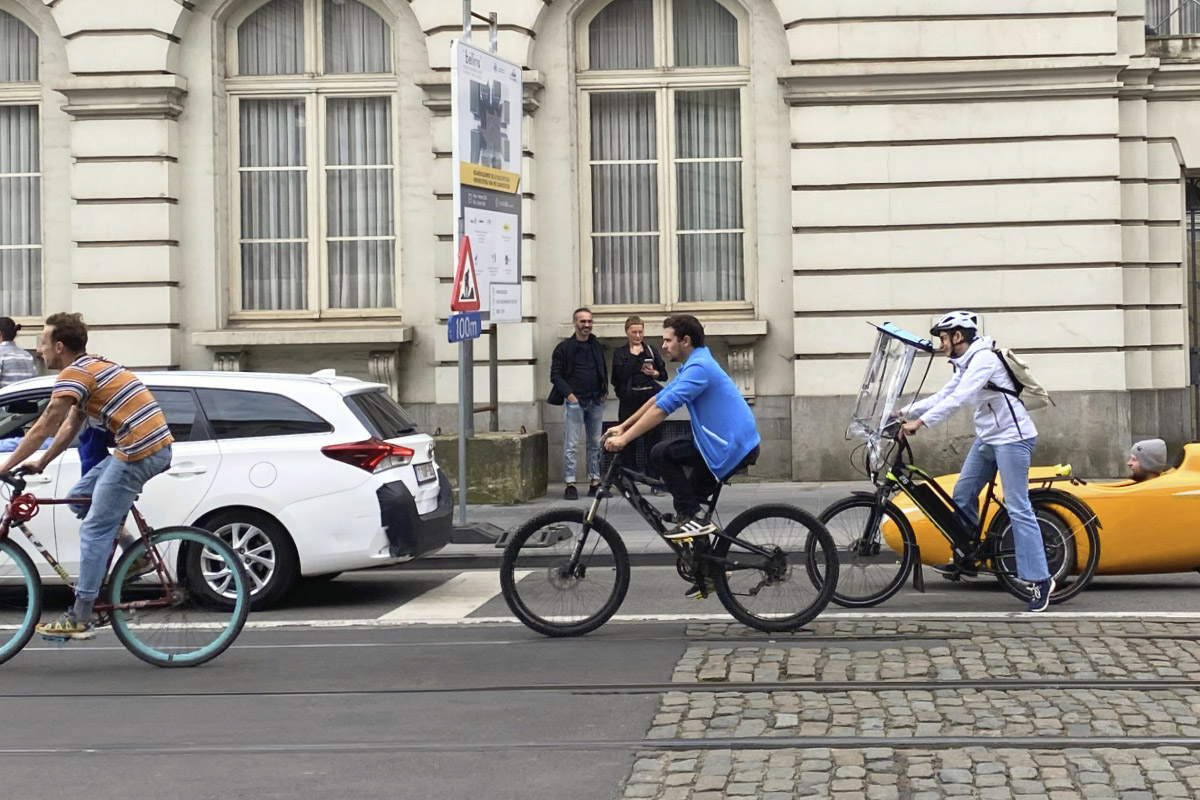When data is a communication tool

Key information
- Sensor and data hosting
- Community engagement (workshops, ...)
- Data analysis (consultancy)
- Long-term monitoring
- Citizen Engagement
- Infrastructure implementation (bike lanes, ...)
- Traffic safety
Objectives
The city of Brussels used Telraam to monitor and evaluate the short-term and long-term effects of the implementation of the new mobility plan
- Short term: what were the effects immediately after the implementation of the plan?
- Long term: impact assessments, such as a change in the number of cyclists.
Telraam's live measurements were ideal for monitoring whether the new mobility plan was paying off.
Citizen participation
Telraam was also tasked with involving citizens who live in the city centre area (the ‘pentagon’) in the project. Through a registration form, citizens could volunteer to install a Telraam sensor in their homes and play an active role in the project themselves.
60 windows, including one in the office of the Belgian prime minister, were fitted with a Telraam counter.
In addition to supplying the counters, Telraam conducted workshops to further engage citizens actively in the project. The first workshop focused on explaining to citizens how to install the device and how they could analyse their own data.
After eight months of data collection, another workshop was organised by Telraam. Citizens were invited, together with the Brussels Councillor for Mobility, to analyse and interpret all the data, and understand the importance of their contribution.
Results
Beyond citizen engagement, the data from the mobility project revealed several key insights. To start with, while traffic had decreased, bicycle traffic had increased and there were fewer accidents.
Telraam observed other key impacts, such as an increase in traffic on certain streets, particularly during the first month of implementation. Sudden changes often disrupt existing patterns before stabilising, but thanks to the data collected through Telraam and the active engagement of citizens, the city was able to use their feedback to refine the plan and address local needs - such as adjusting traffic light cycles to improve flow under the new conditions.
This highlights why data is important for keeping citizens informed as the plan develops.

Since the project in the ‘Pentagon’, some other Brussels districts have also started working with Telraam. The district of Laken and the district of Haren are also using Telraam to measure the effects of a new mobility plan.
Want to know more about this project?
Feel to free to get in touch.
